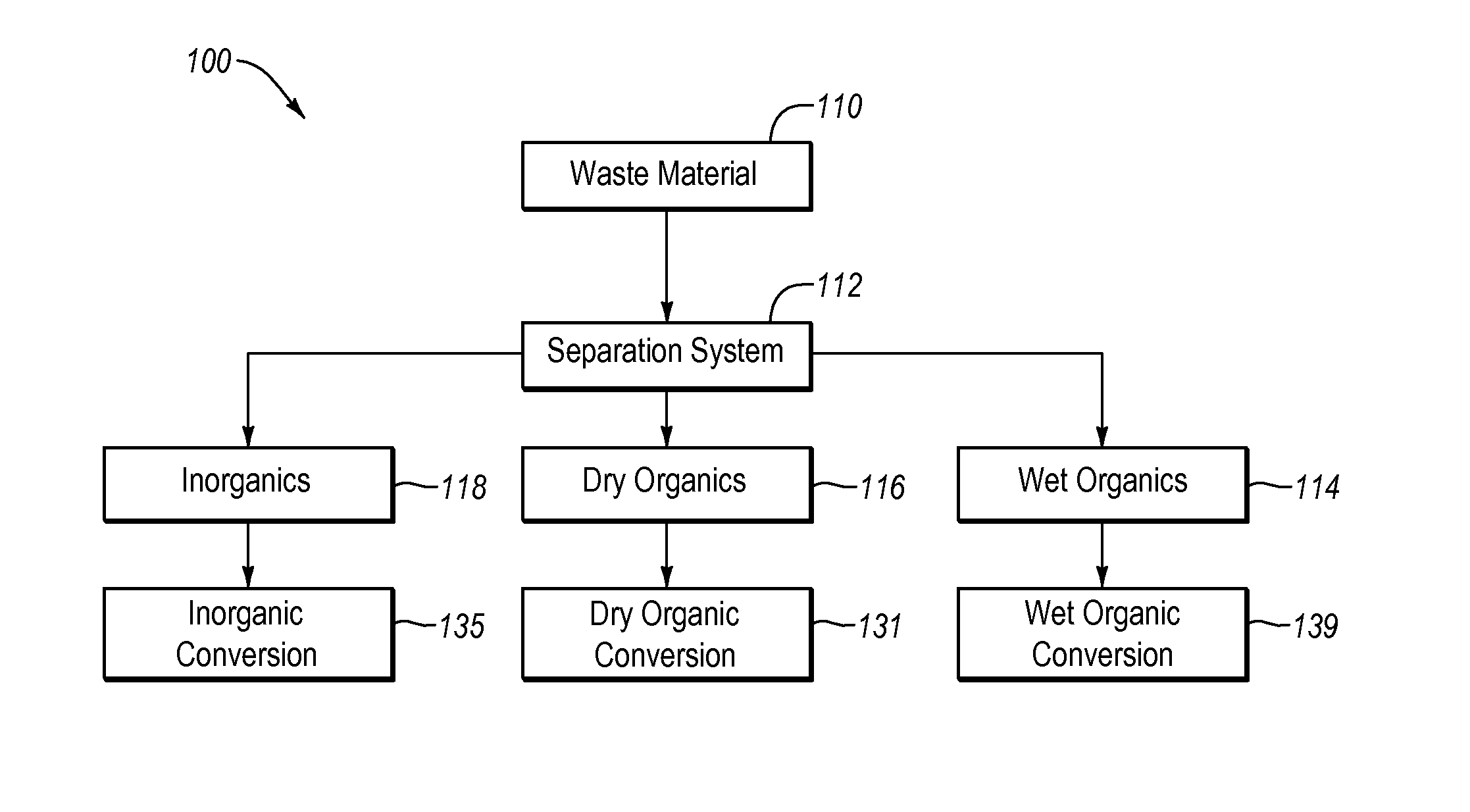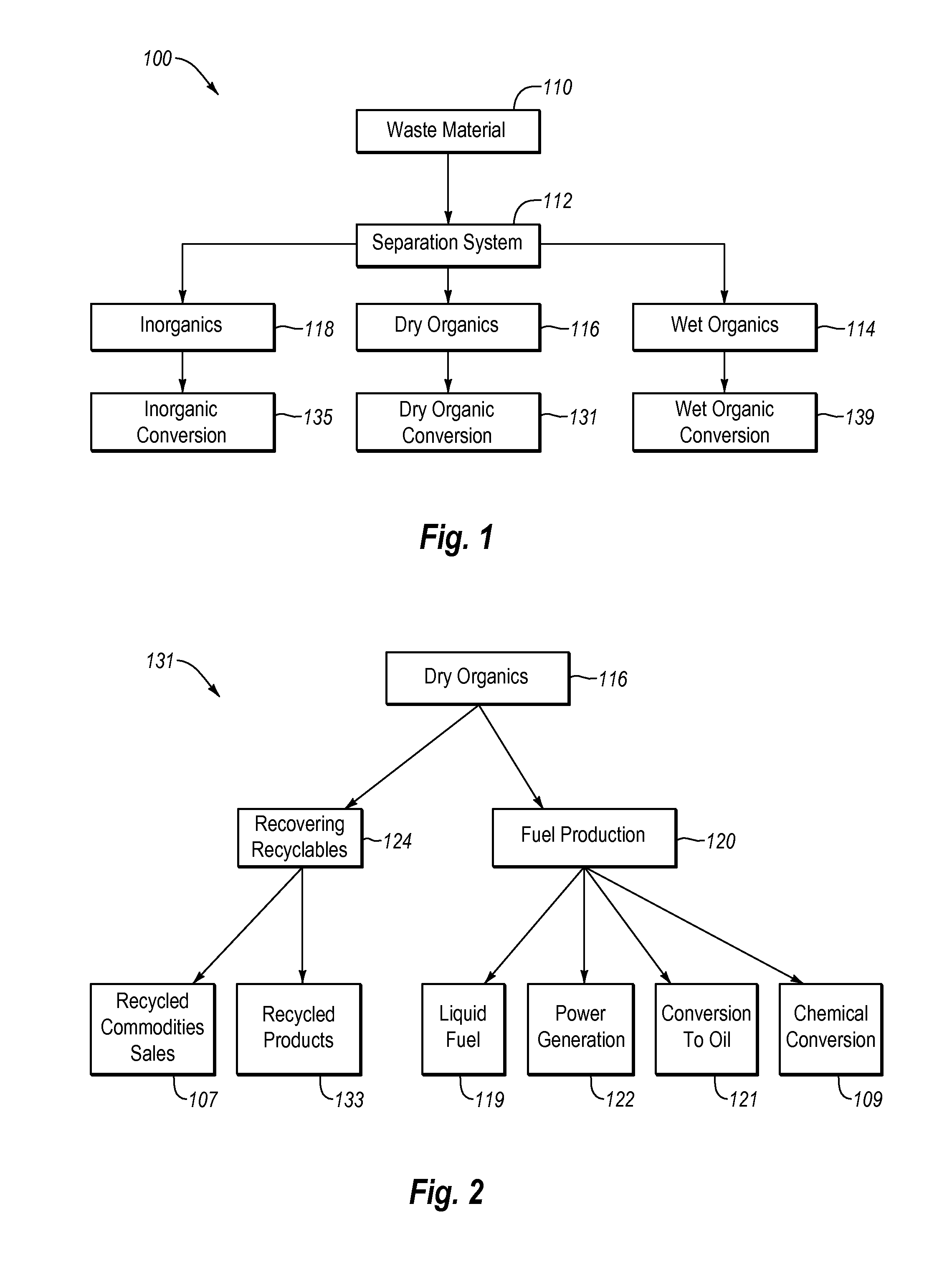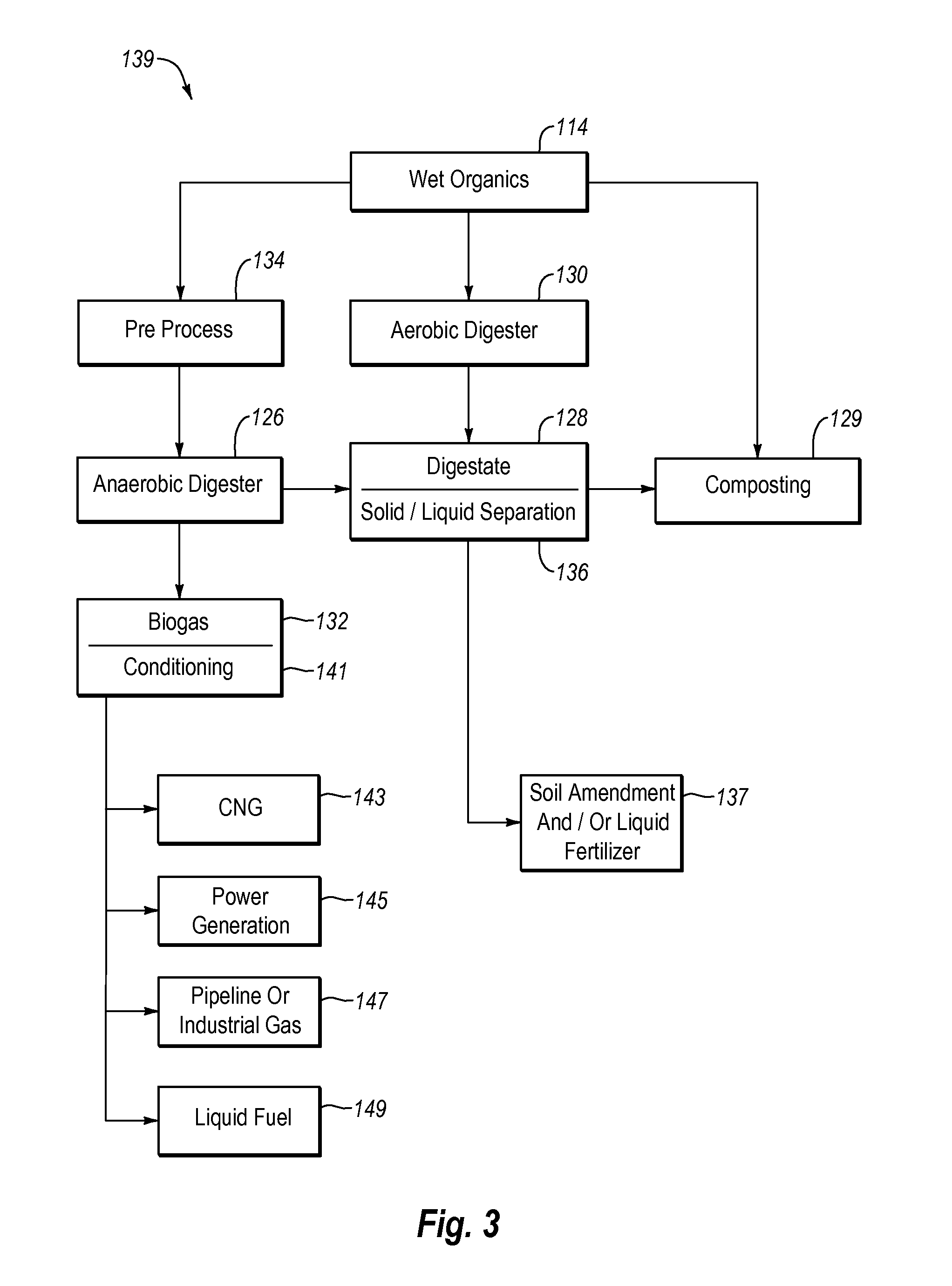Systems and methods for processing mixed solid waste
a technology of mixed solid waste and processing method, applied in the direction of biological water/sewage treatment, energy input, grain treatment, etc., can solve the problems of large majority of recyclable waste materials that are not easily recycled and/or utilized, and the vast majority of recyclable waste materials are still poorly recovered and/or utilized, etc., to achieve the effect of efficient extraction of recyclables
- Summary
- Abstract
- Description
- Claims
- Application Information
AI Technical Summary
Benefits of technology
Problems solved by technology
Method used
Image
Examples
Embodiment Construction
I. Introduction
[0023]FIG. 1 is a schematic of an integrated waste processing and recycling system 100 that produces renewable energy and / or products from a mixed solid waste material. System 100 includes a source of a mixed solid waste stream 110. The mixed solid waste stream includes at least 10% of a wet organic waste material and at least 10% of a dry organic material and optionally inorganic waste material.
[0024]The mixed waste material 110 is mechanically sorted to produce wet organics 114 and a dry organics 116, and optionally inorganics 118. The waste material is processed in a mechanical separation system 112 to produce individual sorted waste fractions that are suitable for conversion into renewable energy and / or products. At least a portion of the dry organics and wet organics are independently processed using separate conversion processes 131 and 139, respectively. Optionally inorganics 118 can be converted into a renewable or recyclable product using inorganic conversion...
PUM
| Property | Measurement | Unit |
|---|---|---|
| cutoff size | aaaaa | aaaaa |
| cutoff size | aaaaa | aaaaa |
| size | aaaaa | aaaaa |
Abstract
Description
Claims
Application Information
 Login to View More
Login to View More - R&D
- Intellectual Property
- Life Sciences
- Materials
- Tech Scout
- Unparalleled Data Quality
- Higher Quality Content
- 60% Fewer Hallucinations
Browse by: Latest US Patents, China's latest patents, Technical Efficacy Thesaurus, Application Domain, Technology Topic, Popular Technical Reports.
© 2025 PatSnap. All rights reserved.Legal|Privacy policy|Modern Slavery Act Transparency Statement|Sitemap|About US| Contact US: help@patsnap.com



